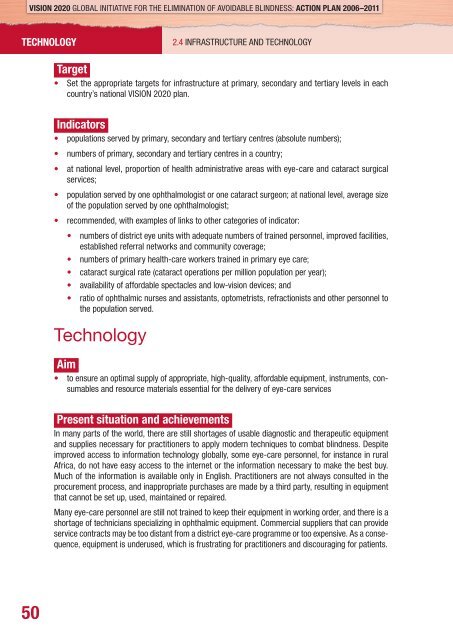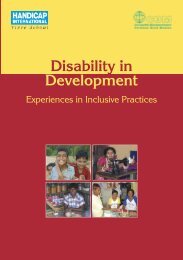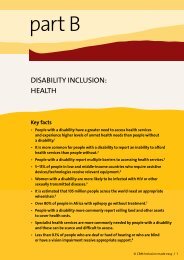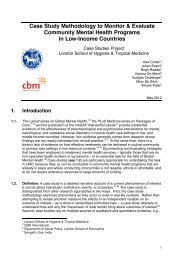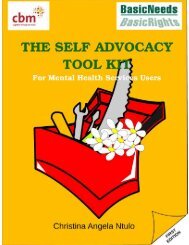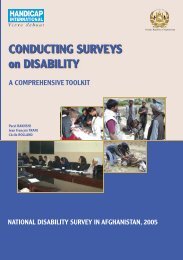Vision 2020 - World Health Organization
Vision 2020 - World Health Organization
Vision 2020 - World Health Organization
You also want an ePaper? Increase the reach of your titles
YUMPU automatically turns print PDFs into web optimized ePapers that Google loves.
VISION <strong>2020</strong> GLOBAL INITIATIVE FOR THE ELIMINATION OF AVOIDABLE BLINDNESS: ACTION PLAN 2006–2011<br />
TECHNOLOGY<br />
2.4 INFRASTRUCTURE AND TECHNOLOGY<br />
Target<br />
• Set the appropriate targets for infrastructure at primary, secondary and tertiary levels in each<br />
country’s national VISION <strong>2020</strong> plan.<br />
Indicators<br />
• populations served by primary, secondary and tertiary centres (absolute numbers);<br />
• numbers of primary, secondary and tertiary centres in a country;<br />
• at national level, proportion of health administrative areas with eye-care and cataract surgical<br />
services;<br />
• population served by one ophthalmologist or one cataract surgeon; at national level, average size<br />
of the population served by one ophthalmologist;<br />
• recommended, with examples of links to other categories of indicator:<br />
• numbers of district eye units with adequate numbers of trained personnel, improved facilities,<br />
established referral networks and community coverage;<br />
• numbers of primary health-care workers trained in primary eye care;<br />
• cataract surgical rate (cataract operations per million population per year);<br />
• availability of affordable spectacles and low-vision devices; and<br />
• ratio of ophthalmic nurses and assistants, optometrists, refractionists and other personnel to<br />
the population served.<br />
Technology<br />
Aim<br />
• to ensure an optimal supply of appropriate, high-quality, affordable equipment, instruments, consumables<br />
and resource materials essential for the delivery of eye-care services<br />
Present situation and achievements<br />
In many parts of the world, there are still shortages of usable diagnostic and therapeutic equipment<br />
and supplies necessary for practitioners to apply modern techniques to combat blindness. Despite<br />
improved access to information technology globally, some eye-care personnel, for instance in rural<br />
Africa, do not have easy access to the internet or the information necessary to make the best buy.<br />
Much of the information is available only in English. Practitioners are not always consulted in the<br />
procurement process, and inappropriate purchases are made by a third party, resulting in equipment<br />
that cannot be set up, used, maintained or repaired.<br />
Many eye-care personnel are still not trained to keep their equipment in working order, and there is a<br />
shortage of technicians specializing in ophthalmic equipment. Commercial suppliers that can provide<br />
service contracts may be too distant from a district eye-care programme or too expensive. As a consequence,<br />
equipment is underused, which is frustrating for practitioners and discouraging for patients.<br />
50


